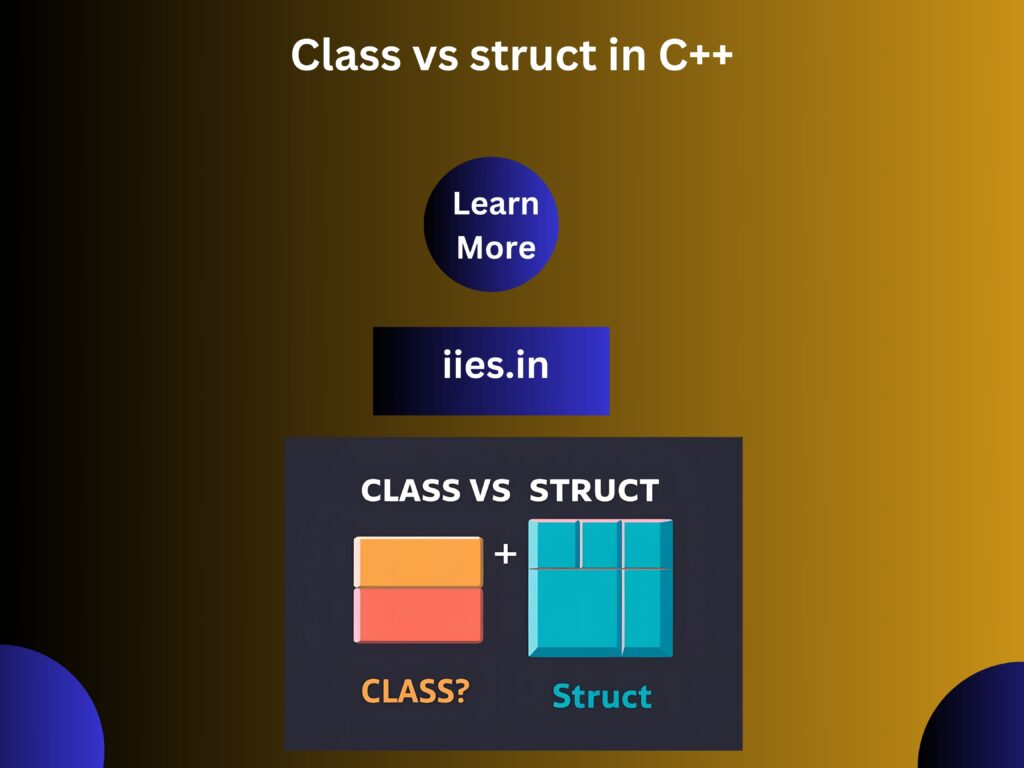Class vs struct in C++:
Class and Structure are similar in many ways yet still have some important differences in C++
What is Structure in C++?
Structure is a user-defined data type. Structure lets you create a new data type that can store various datatypes inside it. The keyword is struct. In a structure, each member can store different data type.
Syntax:
struct structure_name {
// member_1;
// member_2;
} ;
What is Class in C++?
class is a user-defined data type that can uses both data members and member functions. The keyword is class. Data are called Attributes within a class and member functions are called as methods.
Syntax:
class class_name {
// attributes_1;
// attributes_2;
// method_1;
// method_2;
} ;
Similarities Between Structure and Class in C++:
1. Data-Type Creation Mechanism:
– Both struct and class serve as blueprints to define user-defined data types.
2.Support for Member Functions:
– Both struct and class in C++ are able to include member functions.
3. Memory Layout and Compilation:
– There’s no difference in memory layout or performance between a struct and a class with identical contents.
4.Static Members and Functions:
– Structs and classes both support static data members and static member functions, allowing them to share values across all instances or define utility functions tied to the type rather than any instance.
5.Template Usability:
– You can define both structs and classes as templates. They support generic programming through the same template syntax and usage.
Differences between Struct and class in C++:
Description | struct | class |
Default Access modifier | members are public | members are private |
Memory Allocation | Stack Segment. | heap segment. |
Nature | Type value | Type reference |
constructor and destructor | It can only have a parameterized constructor | It can have all type of constructor and destructor |
Null values | Not possible | Possible |
Purpose | Grouping of data | Abstraction of data and inheritance is done further. |
Usage of data | Used for a small amount of data | Used for large amount of data |

